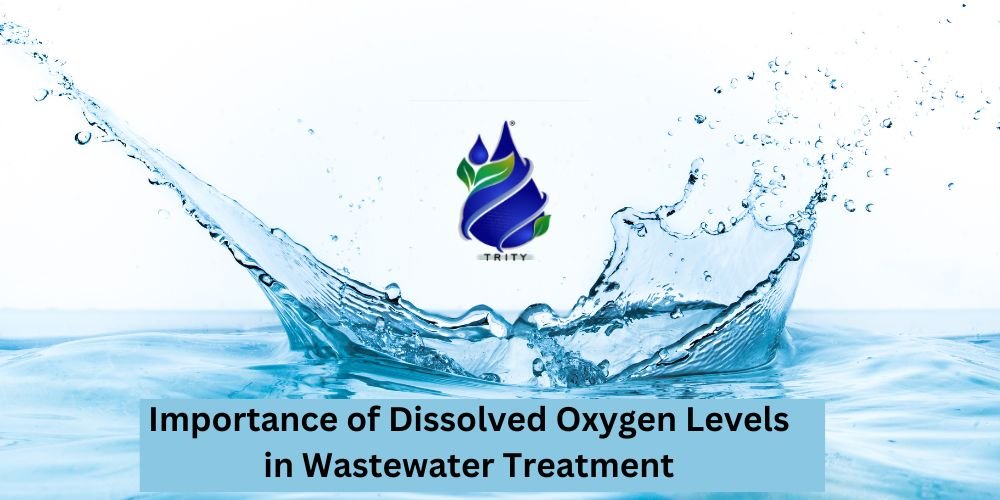
3 Importance of Dissolved Oxygen Levels in Wastewater Treatment
Introduction
Water is highly essential to our daily activities. Whether for washing or flushing. But we sometimes fail to check the quality of the water we use. Water keeps us healthy and supports all forms of life that live underwater. In this post, we are going to discuss the water's quality and dissolved oxygen level. Why is wastewater treatment important and how does dissolved oxygen help in this process? We will look at how it affects wastewater treatment and the water we get from these plants.
Understanding Dissolved Oxygen
When the oxygen molecules mix completely in water, it is known as dissolved oxygen. This oxygen is very important for life underwater to breathe and to live. In wastewater treatment, it is a must to have enough oxygen. Tiny living things in the dirty water need oxygen to clean the dust and other impurities.
Role of Dissolved Oxygen in Wastewater Treatment process
Dissolved oxygen helps certain bacteria do their work easily. This is the second stage or secondary treatment, of the plants. They cannot perform their work without oxygen, they need oxygen to break down the dirt particles and make the water more useful and safer. They are not only good for the environment, but they also increase the importance of wastewater treatment.
Importance of Dissolved Oxygen Levels
- Enhanced Biological Processes
The correct amount of oxygen in wastewater treatment helps the good bacteria to grow and work better. They start working effectively, make the process overall better and improves the capacity and efficiency of the wastewater treatment plants. They can break down the bad stuff in the water and make it safer for everyone and the environment.
- Reduction of Energy Consumption
If the oxygen level is correct in water, it can save money on energy bills. Too much oxygen can waste energy. It is important to maintain the correct level of oxygen in the water for the aeration systems. It should be matched with the level of oxygen that bacteria need to do their work.
- Impact on Overall Treatment Efficiency
Changes in temperature and seasonal variations can affect how much oxygen is dissolved in water. As the weather changes, the amount of oxygen in the water changes too. In the cold season, the temperature of the water drops. When the temperature drops and the amount of oxygen increases,. In the same way, a warm temperature decreases the oxygen level. With changing seasons, the rates of aeration need to be adjusted to keep the level right.
- Organic Load and Pollutant Concentrations
The level of organic matters in wastewater needs more oxygen to clean it. When the water is super dirty and contains lots of dirty stuff, microorganisms need more oxygen. If there are too many chemicals and heavy metals in the water, they can stop oxygen getting into the water. It can make the wastewater treatment process less effective.
- Mixing and Aeration Systems
The process of mixing and aeration systems used by the treatment plants. This can decide the equal distribution of oxygen in the wastewater tanks. Properly designed aeration systems make sure that the oxygen supply is reaching the areas where it is required the most. This maintains the oxygen level and keeps the water healthy.
Strategies for Optimizing Dissolved Oxygen Levels
- Aeration Efficiency Improvement Techniques
Improved aeration systems with better techniques make sure that the air distribution in the plants is equal. The use of improved mixing and energy-saving devices transfers the dissolved oxygen more efficiently the treatment plants. Proper oxygen supply improves the number of good bacteria and makes them more powerful to remove pollutants. And the energy-saving devices reduce the operational costs, and they are eco-friendly too.
- Utilization of Advanced Monitoring and Control Systems
Advanced monitoring and control systems provide real time data on oxygen levels in the wastewater treatment plants. They keep track on the water quality and add oxygen accordingly. These systems help in achieving the goals of treatment plants. They can be adjusted according to the needs and objectives of the plants.
- Integration of Biological Nutrient Removal Processes
Biological nutrient processes like nitrification-denitrification (SND) and enhanced biological phosphorus removal (EBPR) help improve the wastewater treatment importance. They can help make better use of dissolved oxygen. They clean the water by removing nitrogen and phosphorus pollutants. They use the oxygen efficiently and improve the quality of water.
Wrap-up
Optimized dissolved oxygen levels in wastewater treatment systems maintains the efficiency of plants. By lower energy consumption and causing less harm to the environment, dissolved oxygen can help these plants to perform better. With new strategies and monitoring systems the oxygen level in the treatment plants can be improved, making the water cleaner and help create a more sustainable world. The significance of wastewater treatment is big because improvements in water quality and dissolved oxygen level help safeguard public health and natural resources.


